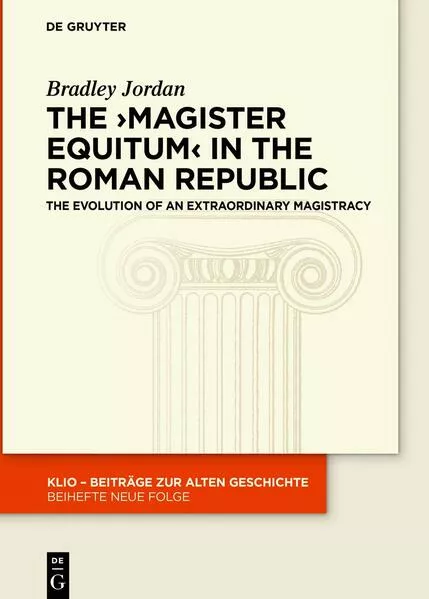
- Publikationen ca: 3
- Gefolgt von 1 Nutzern
- Fragen & Antworten
Jordan, Bradley

The ›magister equitum‹ in the Roman Republic
The magister equitum, a subordinate to the Roman dictator during the Roman Republic, has been little studied to-date, in part due to the scattered and antiquarian nature of the evidence. This book addresses this gap by providing a definitive description and analysis of the office, focusing on three core questions: first, and most importantly, what were the powers and role of the office?; second, what senatorial rank did the magister equitum have?; finally, how did the magister equitum evolve under the first century BCE dictators, Sulla and Caesar? The book engages with recent advances in understanding the constitutional foundations and development of the Republican state to re-assess the role played by the office and its occupants in crucial moments of Roman history.

The ›magister equitum‹ in the Roman Republic
The magister equitum, a subordinate to the Roman dictator during the Roman Republic, has been little studied to-date, in part due to the scattered and antiquarian nature of the evidence. This book addresses this gap by providing a definitive description and analysis of the office, focusing on three core questions: first, and most importantly, what were the powers and role of the office?; second, what senatorial rank did the magister equitum have?; finally, how did the magister equitum evolve under the first century BCE dictators, Sulla and Caesar? The book engages with recent advances in understanding the constitutional foundations and development of the Republican state to re-assess the role played by the office and its occupants in crucial moments of Roman history.

The ›magister equitum‹ in the Roman Republic
The magister equitum, a subordinate to the Roman dictator during the Roman Republic, has been little studied to-date, in part due to the scattered and antiquarian nature of the evidence. This book addresses this gap by providing a definitive description and analysis of the office, focusing on three core questions: first, and most importantly, what were the powers and role of the office?; second, what senatorial rank did the magister equitum have?; finally, how did the magister equitum evolve under the first century BCE dictators, Sulla and Caesar? The book engages with recent advances in understanding the constitutional foundations and development of the Republican state to re-assess the role played by the office and its occupants in crucial moments of Roman history.